In this article, we share email marketing best practices that will help you build and maintain the best email list possible.
We’ve broken the article down into 3 sections:
Looking for a specific topic? Here’s a table of contents:
- Don’t purchase an email list
- Use optin forms to build an engaged list
- Send a welcome email or series
- Personalize everything (including the sender name)
- Write enticing subject lines
- Write like a real person (to a real person)
- Use compelling copy
- Connect with readers through storytelling
- Use social proof
- Focus on micro conversions
- Clean your email list regularly
- Follow the rules
- Stick to a schedule
- Test your emails
- Automate your email marketing
Before we get into our email marketing best practices for list building, let’s take a minute to talk about why you should be using email marketing in the first place.
Why Email Marketing?
In the U.S. alone, more than 90% of people over the age of 15 use email. And, the email marketing stats show that 58% of us check our email before we even get out of bed!
Plus, despite the increasing popularity of social media, email performs better than social media with a 6.05% conversion rate compared to social media’s 1.9% conversion rate.
It’s safe to say that email marketing is the most effective way to connect with and nurture leads, turning them into lifelong customers.
Getting Started With Email Marketing
If you’ve never done any email marketing before, it can seem overwhelming. We highly recommend that you take the time to go through our comprehensive guide to email marketing.
We also have an excellent, step-by-step guide to showing you how to run a successful email marketing campaign.
Those are 2 great guides that are helpful to beginners and advanced email marketers alike.
Either of those guides will show you what you need to know to build a successful email marketing practice.
The most important step in email marketing is getting started. Once you’ve done that, you’re ready for best practices that will help you build a strong and engaged list.
Email Marketing Best Practices for List Building
Our email marketing best practices will help you grow your email list, create compelling emails, and improve deliverability through email list maintenance.
So, let’s get started!
Building Your Email List
In this section, you’ll learn all about the email marketing best practices to build your email list.
1. Don’t Purchase an Email List
It may seem like a quick and easy way to jumpstart your email marketing, but don’t be swayed.
You want to make sure that your emails stay out of the spam folder, right? Well, subscriber engagement plays a huge role in email deliverability.
Know what you don’t get when you buy an email list? A list of engaged subscribers.
When you buy an email list, you’re getting the same list of people that other email marketers can buy, too. And, most importantly, these are people who didn’t ask you to email them.
That can lead to other problems, particularly with the rise of data protection rules like GDPR (General Data Protection Regulation).
So, if you can’t buy an email list, what are you supposed to do? How are you supposed to build your email list?
That brings us to the next point in our email marketing best practices.
2. Use Optin Forms to Build an Engaged List
The first step to creating an engaged and active list is getting your site visitors to agree to receive emails from you.
You can quickly and easily create a beautiful optin using OptinMonster to get your list building up and running in no time. Here’s how it’s done:
Step 1. Create/Edit Campaign
Login to your OptinMonster account and click the Create Campaign button.
We’ll use the Popup campaign type and the Simple campaign template.
Name your campaign (something meaningful and memorable for you) and choose the website where you plan to use the campaign.
Now click Start Building and you’ll be taken to the OptinMonster campaign builder. You’ll see a live preview of the default Simple campaign on the right-hand side of the builder.
Step 2. Design Campaign
Designing the perfect campaign is super easy!
To change pretty much anything in your campaign, just click on any element in the live preview (right side of the builder) to open the editing tools. They open to the left of the campaign preview.
You can edit the appearance of any buttons by clicking on the button.
Once your campaign looks the way you want, you’re ready to set your display rules.
Step 3. Set Display Rules
Display rules control who sees your campaign and when. By default, the campaign is set to appear to all site visitors after 5 seconds.
Exit-intent popups are successful for many of our customers, so let’s change this popup to appear if exit detected.
Click Next Step and set the action to show the campaign view that you want to appear (we want the Optin view). At this point, click the Save button in the upper right corner.
OptinMonster’s display rules engine is ridiculously powerful. You can use it to create follow up campaigns, do onsite retargeting, and so much more.
Step 4. Setup Email Integration
Go to the Integrations tab and click Add New Integration. Then, select your email provider from our list of native integrations.
Step 5. Publish Your Campaign
New campaigns are paused by default. To make your campaign live, go to the Publish tab from the top menu. Toggle the Status to Live, then save your campaign.
Scroll down to find OptinMonster’s broad range of publishing options. If you need more information, take a look at the documentation for embedding OptinMonster on your site.
Now you’re all set to start converting your anonymous website traffic into subscribers.
3. Send a Welcome Email or Series
It’s important to engage new subscribers right away. One of the best ways to do that is by sending a welcome email or welcome email series.
OptinMonster customers can take advantage of OptinMonster University’s course How to Create a Welcome Email Series That Sells to get your new subscribers hooked from the start (and give your sales a boost).
Think you can skip the welcome email? We don’t recommend it.
For starters, welcome emails have a 91.43% open rate and can boost revenue by 30%.
There are a handful of things you can do to make sure that your welcome emails are effective:
- Thank your new subscriber. Saying “thank you” does 2 things: adds a human quality to your emails and builds brand loyalty.
- Deliver on your promise. If you got subscribers to sign up with the promise of a lead magnet, give it to them in the welcome email.
- Set expectations. Let subscribers know what kind of emails you’ll be sending them and how often.
- Tell your story. Tell subscribers a little about your business and show off your brand’s personality.
- Ask subscribers to whitelist you. This improves your deliverability and makes sure your emails don’t get sent to spam.
- Give subscribers other ways to reach you. Include links to the social media platforms you use and encourage subscribers to follow you.
Let’s take a look at a welcome email example from Food52:
This email hits just about everything on the list.
Crafting Quality Emails
Now that we’ve covered how you can build your list and engage subscribers right away, it’s time to talk more about how to create great emails.
Here, we share 7 email marketing best practices to help you write high-quality emails that your subscribers will love.
4. Personalize Everything (Including the Sender Name)
Have you ever gotten an email that starts out “Hi, subscriber_first_name!”
Makes you feel warm and fuzzy, right?
Not likely.
We all know that emails are automated. But if you’re like most of us, getting an email that clearly sent through a merge by a computer instead of a person makes you feel like you don’t matter.
Personalization makes a huge difference.
If you don’t have a subscriber’s first name, you should set up your email marketing service provider to add a default greeting.
“Hi, subscriber_first_name!” could easily become “Hi, friend!” just by using a default greeting. It’s not completely personal, but at least it’s not a database field name.
You can also increase personalization by using real names in your sender email address and From fields.
For example, instead of sending an email from Marketing at OptinMonster when you subscribe to OptinMonster’s newsletter, you’ll get emails from Jacinda at OptinMonster (me!) with that name in the signature. ?
5. Write Enticing Subject Lines
Did you know that 33% of email recipients open an email based solely on the subject line?
Here are some email subject line best practices:
- Make people curious so they open your email to learn more
- Use urgency to trigger FOMO (fear of missing out)
- Ask questions
- Include emoji and symbols so your email stands out
- Optimize for mobile by keeping it short
Check out our epic list of email subject lines you can use as inspiration.
6. Write Like a Real Person (to a Real Person)
If you want readers to stick around, you need to sound like a real person.
But that’s not all. You need to write to them as though they’re real people, too.
That means no jargon, no marketing speak. Just one person talking to another person.
Yes, you need to write to a single person. Don’t worry, this doesn’t mean individual emails to every person on your email list.
But you should make them feel that way.
Lyft does a good job of this even in an update email talking about their privacy policy:
Notice all of the references to you:
- “We’re writing to let you know…”
- “As part of our ongoing commitment to transparency and your privacy…”
- “…you can review it…”
- “…your Lyft experience…”
Copy Hackers calls this the Rule of One: every email you write should be written as if you’re communicating directly with 1 person and 1 person only.
Who is your ideal customer? Write only to them.
7. Use Compelling Copy
What you write about, and how you write it, is just as important for open rates as your subject line. If your subscribers enjoy your content, they’re more likely to open your emails in the future.
But, if subscribers don’t like your content, they’re going to stop opening your emails no matter how great your subject line is… And they’ll probably even unsubscribe.
So, how do you write email copy that’s going to get read time and again?
AIDA.
Attention
Grabbing your reader’s attention starts with your subject line, but it has to continue inside your email, too. This is your hook.
Interest
After you’ve grabbed your reader’s attention, you need to get their interest and make them open to what you’re offering. You’re probably going to start this section with the word “you.”
Desire
Now it’s time to build desire. This is where you move the reader towards taking action by sharing the benefits they’ll get by taking that action.
Action
This is your call to action. Drive your reader to act by showing them how to do the thing (buying, clicking, subscribing… this works for everything). You might even throw in how other people are already benefiting from the action.
8. Connect With Readers Through Storytelling
Storytelling is the best way to show readers that you have what they’re looking for. Fortunately, crafting a great story is pretty easy:
Step 1. Focus on Your Reader’s Needs
Use your customer avatars to identify the specific reasons subscribers end up on your list. Build your story based on the role you’ll play in solving their problem.
Step 2. Simplify the Reader’s Problem
Put the subscriber’s problem into simple terms for them to create a connection and show that you understand where they’re coming from.
Step 3. Give the Reader a Reason to Care
Emotion is what makes people want to buy. Use emotional motivators to keep subscribers engaged and encourage action.
Step 4. Be Relatable
Tell your story using words that your subscriber would use. And don’t use it to make a sales pitch.
Step 5. Make Your Reader the Star
Your story is about you, but only in terms of how you relate to your subscriber. You are the mentor, your subscriber is the real star.
9. Use Social Proof
Social proof is a psychological phenomenon where people conform to the actions of others under the assumption that those actions are reflective of the correct behavior.
Put simply, people tend to act the way others around them act. So, if your subscribers are shown results from other people who are doing what you want them to do, they’re more likely to do it, too.
Social proof takes the form of things like testimonials, reviews, supporting statistics, user-generated content, endorsements, influencers, and more.
While 82% of Americans seek recommendations from friends and family before making a purchase, 70% of people will trust a recommendation from someone they don’t even know.
There are tons of ways and reasons to use social proof in your emails.
If you’re trying to sell a product or service, including testimonials from other happy users is a great way to encourage readers to take action.
Here’s an example of social proof from J. Crew:
Throughout their email, J. Crew includes quotes from a professional in children’s fashion, showing readers that they’re trusted by others in the fashion industry, so why not you?
You can even use social proof if you’re trying to drive traffic to a blog post. It’s as simple as including a positive blog comment in your email or showcasing the success of another reader who took the advice you’re giving.
10. Focus on Micro Conversions
A micro conversion is a single action taken by a visitor that gets them closer to primary goal conversion. This means things like newsletter signups, adding products to a cart, or downloading lead magnets.
Essentially, micro conversions are the small wins.
Death to the Stock Photo talked to messaging platform Vero about how they use micro conversions in their email marketing so subscribers get used to taking action.
We’re talking really simple actions like following the brand on social media. But, when you get subscribers in the habit of converting, no matter how small those conversions are, it gets easier for subscribers to commit to bigger conversions.
Maintaining Your Email List
So far, you’ve learned all about how to build an engaged list and keep them engaged through quality emails.
In this section, you’ll learn email marketing best practices to help you maintain the email list you’ve spent time and energy cultivating.
11. Clean Your Email List Regularly
Every year, your email list declines by 20–30%. This means that you’re sending emails to tons of subscribers who will never open or engage with them.
And that impacts your email deliverability.
Fortunately, you can clean your email list and cut the dead weight pretty easily.
Many email marketing services even have a list cleanup tool that you can just update settings and run.
We recommend starting with your most active email lists since these are the lists driving conversions, leads, and sales. Eventually, though, you’ll want to scrub all of your lists.
12. Follow the Rules
We talked about GDPR earlier, but that’s not the only compliance concern for email marketers. The CAN-SPAM Act (2003) also offers clear guidelines that marketers must follow.
There are 3 key aspects of the CAN-SPAM Act that you’ll want to pay attention to:
- Make it easy to opt-out. You must give subscribers a “clear and conspicuous” way to opt-out of future emails. The easiest way to do this is to include a link that specifically says “Unsubscribe” in the footer of your emails.
- Monitor what others do on your behalf. If you use a 3rd-party service (like an agency) for your email marketing, you’ll need to give the opt-out information to those services. And, it’s your responsibility to confirm compliance, so make sure you know what your 3rd-party services are doing in your name.
- Be honest. You can’t use false or misleading information in any part of your email, from the header to the email body. This includes using deceptive subject lines.
The good news about email marketing rules is that most consumers are happy to share personal information… they just want to know how it’s being used.
13. Stick to a Schedule
Remember when you sent that welcome email to your new subscriber and told them you’d be emailing them every week?
Stick to that schedule. Not necessarily a weekly schedule (do what works best for your subscribers), but be consistent.
Not only will your subscribers appreciate the consistency, but ISPs (internet service providers) do, too.
When you send a consistent volume of emails on a consistent schedule, you’re less likely to be flagged as a phisher or spammer by ISPs.
When to Send Your EmailsCheck out The Best Time to Send Emails to Boost Opens, Clicks, and Sales!
You’ll also want to make sure that you’re sending a good mix of sales and value emails.
We recommend planning your emails on a 3:1 ratio, allowing yourself 1 sales email for every 3 value emails you send. This doesn’t mean that you have to send them on a 3:1 schedule.
Typically, when we send out sales emails, we’re not just sending 1 every few weeks. Instead, we send sales campaigns that might include 4 sales emails in a row.
To balance this, you’d send out 12 value emails (so, 3 months of value emails if you’re sending 1 email each week). Then, you can send out your sales series of 4 emails.
Why do this?
Well, when you’re constantly selling to your list, they stop engaging.
Think about it. If every single email you got from a business was asking you to buy something, but they never gave you anything in return, how long would you stick around?
14. Test Your Emails
There are 2 types of testing that we’re talking about here:
- A/B testing
- Previewing and functionality
A/B Testing
It’s likely that your email service provider includes a split-testing feature that will help you test:
- Subject and preheader
- Day and time
- Format, images, and copy
- Call to action
Email split testing means testing the performance of the original version of your email (the control) against another version where you have changed one of the elements shown above. You can use multivariate email testing if you want to change more than one element.
Split-testing your emails helps you make evidence-based decisions about your email marketing campaigns. This is a lot more effective than guesswork or relying on “gut instinct.”
Previewing and Functionality
Your subscribers have lots of options when it comes to reading your emails. Different browsers, mobile devices, email services.
Previewing and testing the functionality of your emails is vital to make sure that your emails are showing up and working as expected.
Trust us, you don’t want to send out an email with several calls to action with links that don’t actually work.
While your email marketing service probably has a preview mode where you can check out what your email looks like on desktop vs. mobile, you really should take the extra step of sending yourself a test email.
That way, you can see exactly what your email will look like on your desktop and mobile device.
Want to take it up a notch? Use an email preview tool like Litmus or Email On Acid to see what your email will look like on different platforms:
15. Automate Your Email Marketing
We talked quite a bit about personalization and writing for a single reader, but that doesn’t mean that you can’t automate your email marketing.
In fact, we encourage it!
You can use a drip email campaign to keep users engaged with your brand through a pre-written, timed or triggered series of emails. Drip email campaigns are great for the welcome emails we talked about earlier, but you can also use them to:
- Nurture leads
- Onboard customers
- Deliver email courses
- Recover abandoned carts
- Automate other types of lead engagement like recommendations, renewals, confirmations, and unsubscribes
Your email marketing service should make it easy to automate your email marketing.
Constant Contact is one of our favorite email marketing services. We recommend it because it’s beginner-friendly and offers a quick and easy setup.
Plus, there’s a lot of support to use this email marketing automation tool.
That’s it for our email marketing best practices to help you build an active and engaged email list. Want more inspiration? Check out these 10 brilliant email marketing examples that you can learn from.
Remember, the most important step to building a solid list is making sure that your subscribers want to hear from you.
The best way to do that is with OptinMonster. Get started with OptinMonster today and create the optin campaigns you need to grow your email list and boost sales.


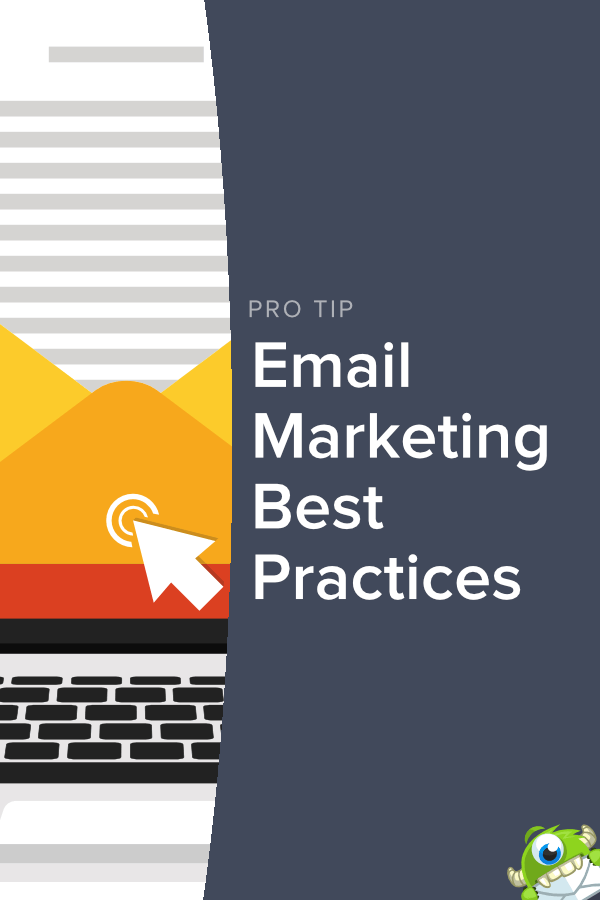

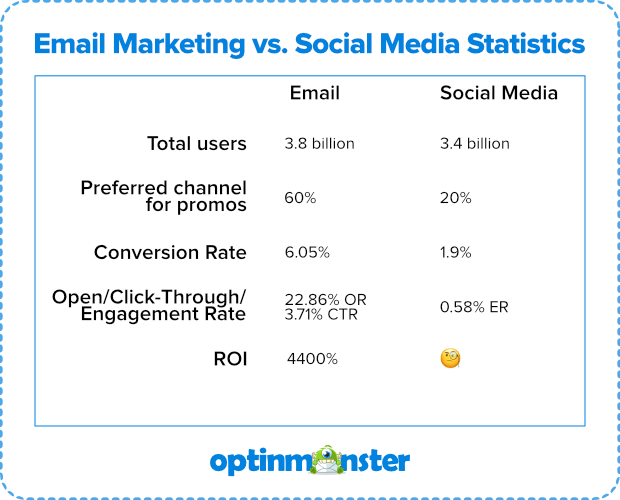
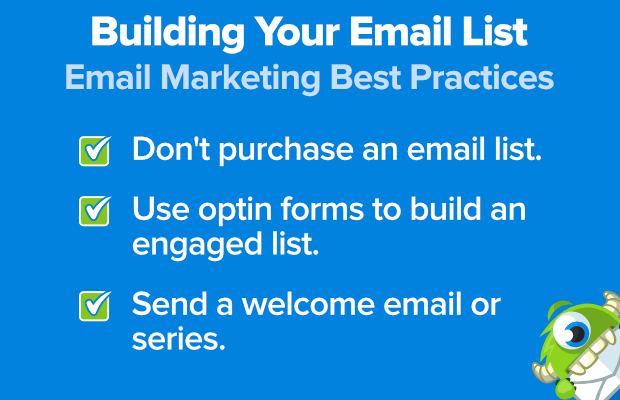



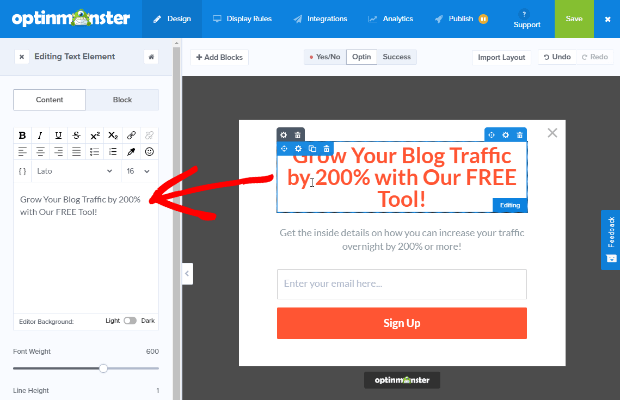
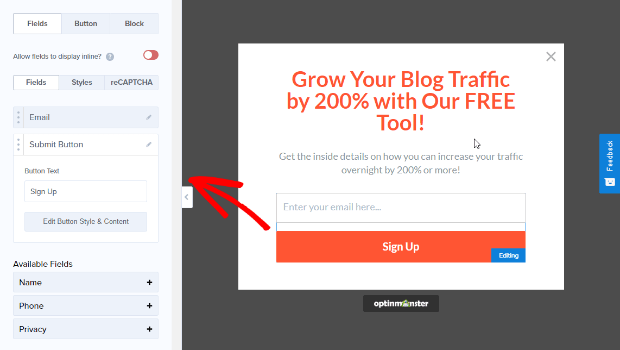










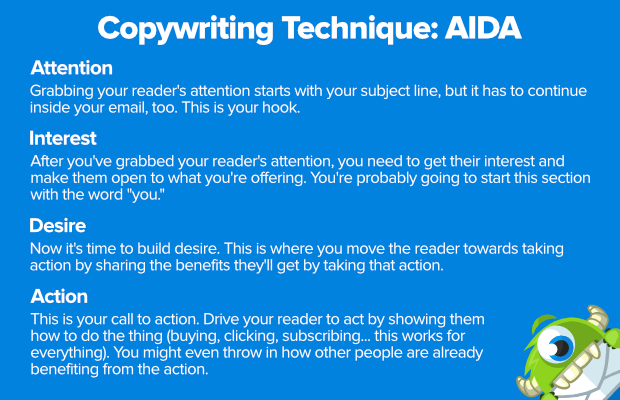



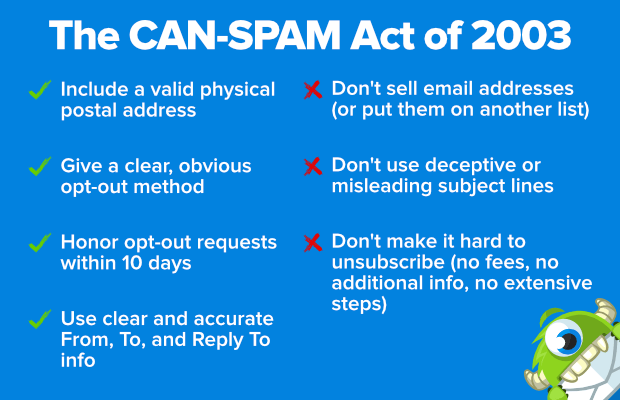












Add a Comment